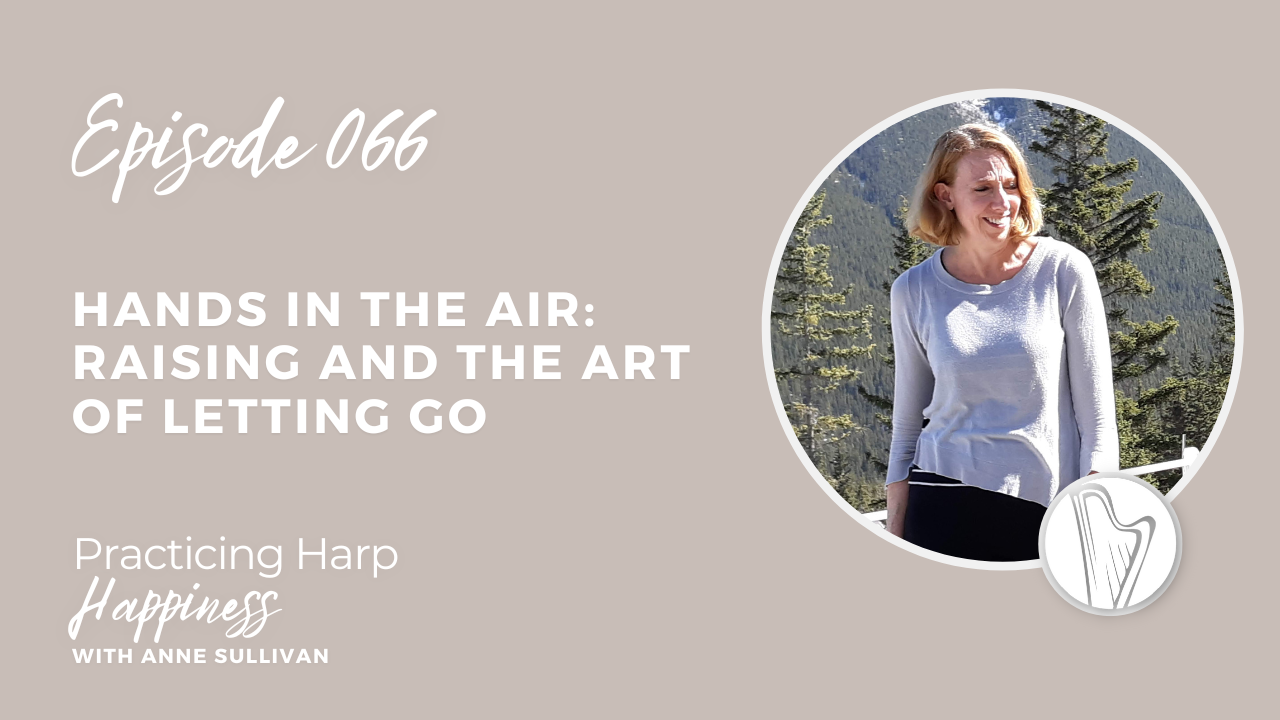#066: Hands in the Air: Raising and the Art of Letting Go

Form follows function.
I expect you’re familiar with that quote but you may not know the entire context. The phrase is a vast simplification of an idea put forth by architect Louis Sullivan, mentor to Frank Lloyd Wright, in his 1896 article titled “The Tall Office Building Artistically Considered.” Working from an idea of the ancient Roman architect Vitruvius that a building should be solid, useful and beautiful, Sullivan developed his overriding philosophy, what he called the single "rule that shall permit of no exception." This was his complete statement:
Whether it be the sweeping eagle in his flight, or the open apple-blossom, the toiling work-horse, the blithe swan, the branching oak, the winding stream at its base, the drifting clouds, over all the coursing sun, form ever follows function, and this is the law. Where function does not change, form does not change. The granite rocks, the ever-brooding hills, remain for ages; the lightning lives, comes into shape, and dies, in a twinkling.
It is the pervading law of all things organic and inorganic, of all things physical and metaphysical, of all things human and all things superhuman, of all true manifestations of the head, of the heart, of the soul, that the life is recognizable in its expression, that form ever follows function. This is the law.
Those are profound thoughts, and today we are going to apply them not to the oak, the clouds or the cosmos, but to the harp, specifically to one of the more confusing aspects of harp technique, the technique of raising.
What you do with your hands after you play a string or a scale or a chord is just as important as how you place your fingers before you play and how you move your fingers when you play. It’s the follow through that makes a huge difference in your sound. It also affects your ability to move around the harp quickly and helps you stay relaxed while you play.
There are many schools of thought on how to raise and on today’s show I’ll try to get to the heart of the matter - why we raise. Because once you understand the why, the true function of raising, the gesture itself follows naturally. I’ll also give you a simple formula to help you practice the perfect raise, even if you’ve never felt comfortable raising before.
Links to things I think you might be interested in that were mentioned in the podcast episode:
- Coaching Enrollment is now open. Click here to reserve your spot.
- Related resource: Rich, Warm, Round: How to Create Your Sensational Harp Sound blog post
- Harpmastery.com
Get involved in the show! Send your questions for future podcast episodes to me at [email protected]

